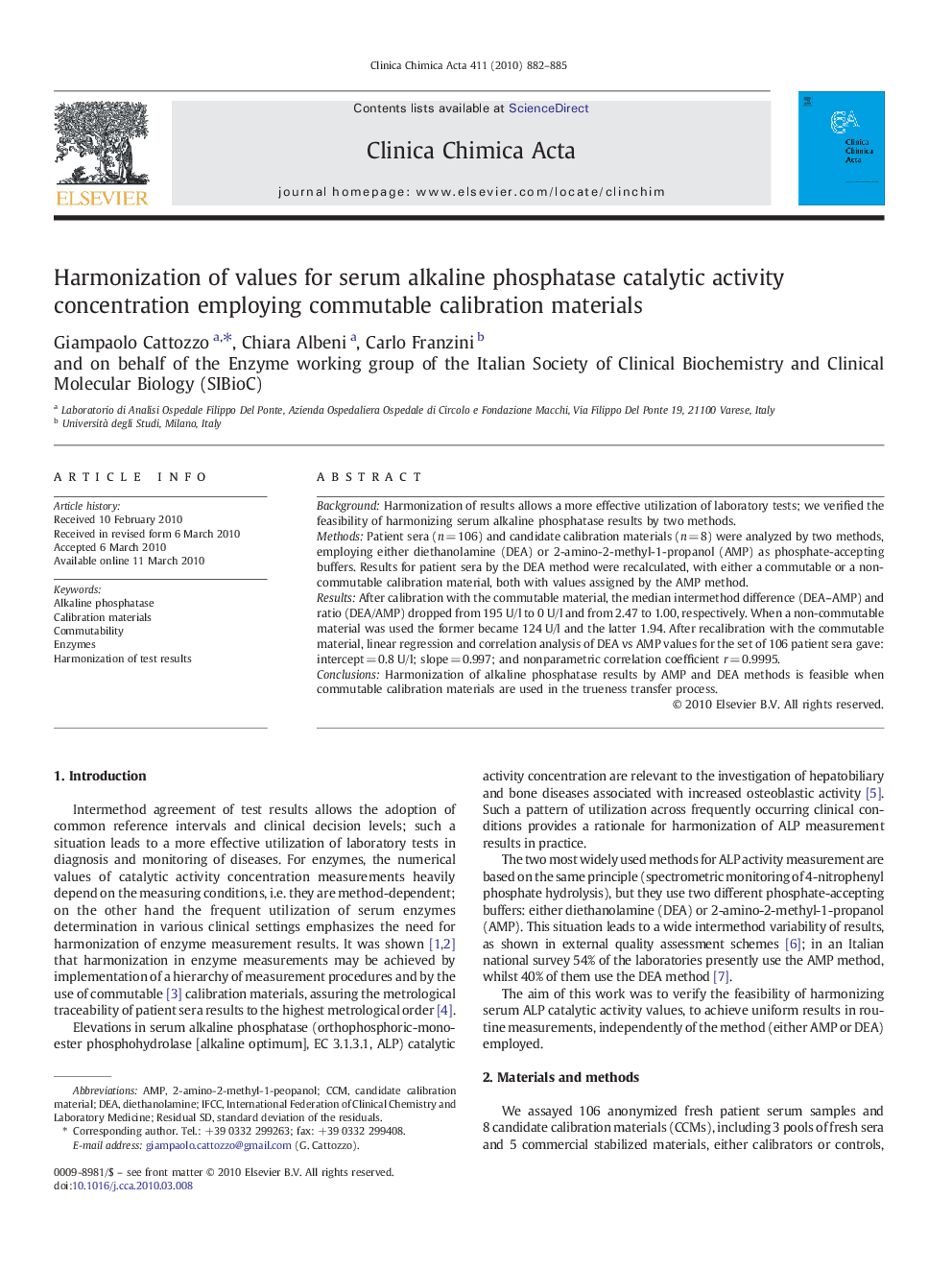| Article ID | Journal | Published Year | Pages | File Type |
|---|---|---|---|---|
| 1966127 | Clinica Chimica Acta | 2010 | 4 Pages |
BackgroundHarmonization of results allows a more effective utilization of laboratory tests; we verified the feasibility of harmonizing serum alkaline phosphatase results by two methods.MethodsPatient sera (n = 106) and candidate calibration materials (n = 8) were analyzed by two methods, employing either diethanolamine (DEA) or 2-amino-2-methyl-1-propanol (AMP) as phosphate-accepting buffers. Results for patient sera by the DEA method were recalculated, with either a commutable or a non-commutable calibration material, both with values assigned by the AMP method.ResultsAfter calibration with the commutable material, the median intermethod difference (DEA–AMP) and ratio (DEA/AMP) dropped from 195 U/l to 0 U/l and from 2.47 to 1.00, respectively. When a non-commutable material was used the former became 124 U/l and the latter 1.94. After recalibration with the commutable material, linear regression and correlation analysis of DEA vs AMP values for the set of 106 patient sera gave: intercept = 0.8 U/l; slope = 0.997; and nonparametric correlation coefficient r = 0.9995.ConclusionsHarmonization of alkaline phosphatase results by AMP and DEA methods is feasible when commutable calibration materials are used in the trueness transfer process.
